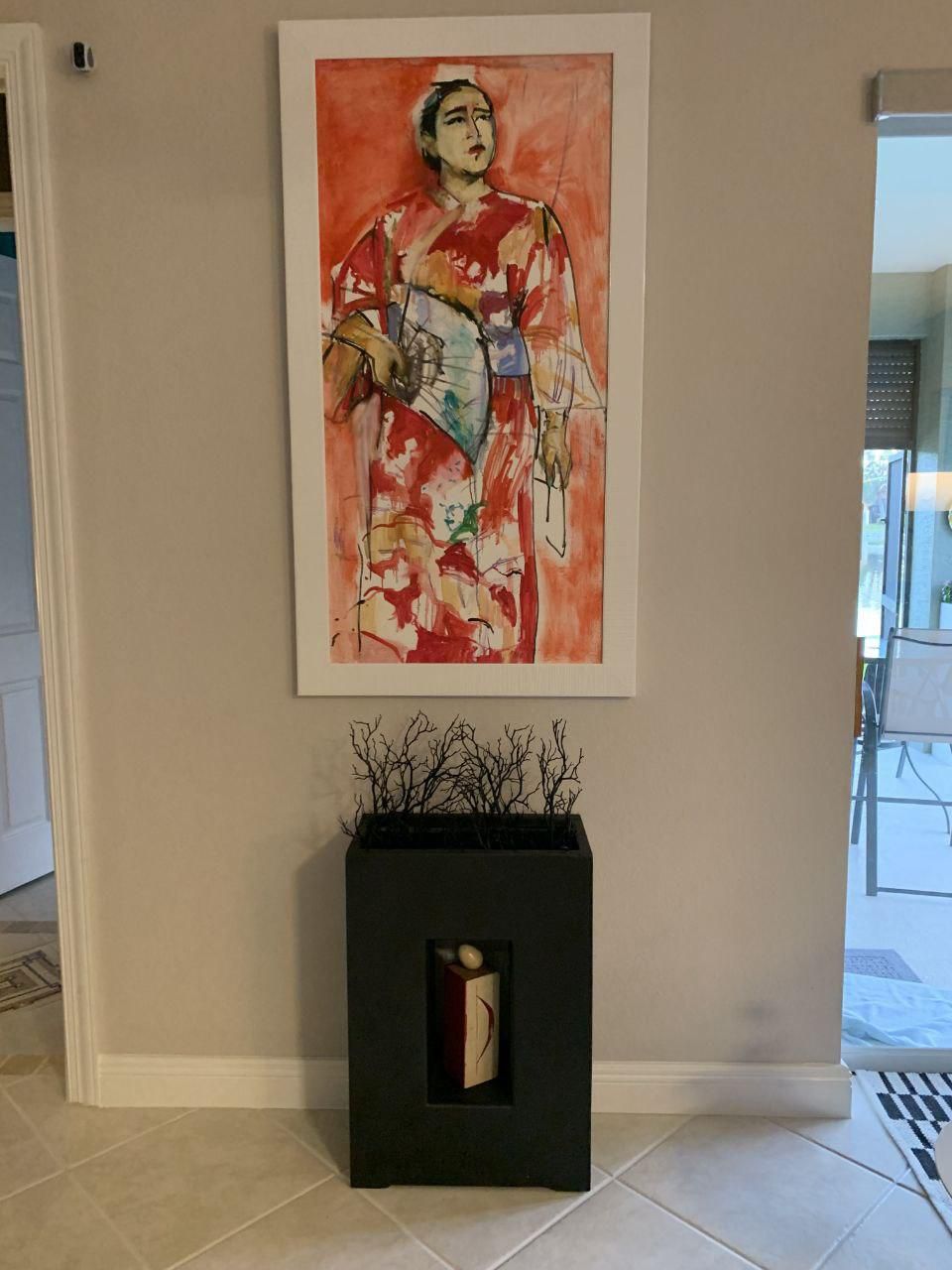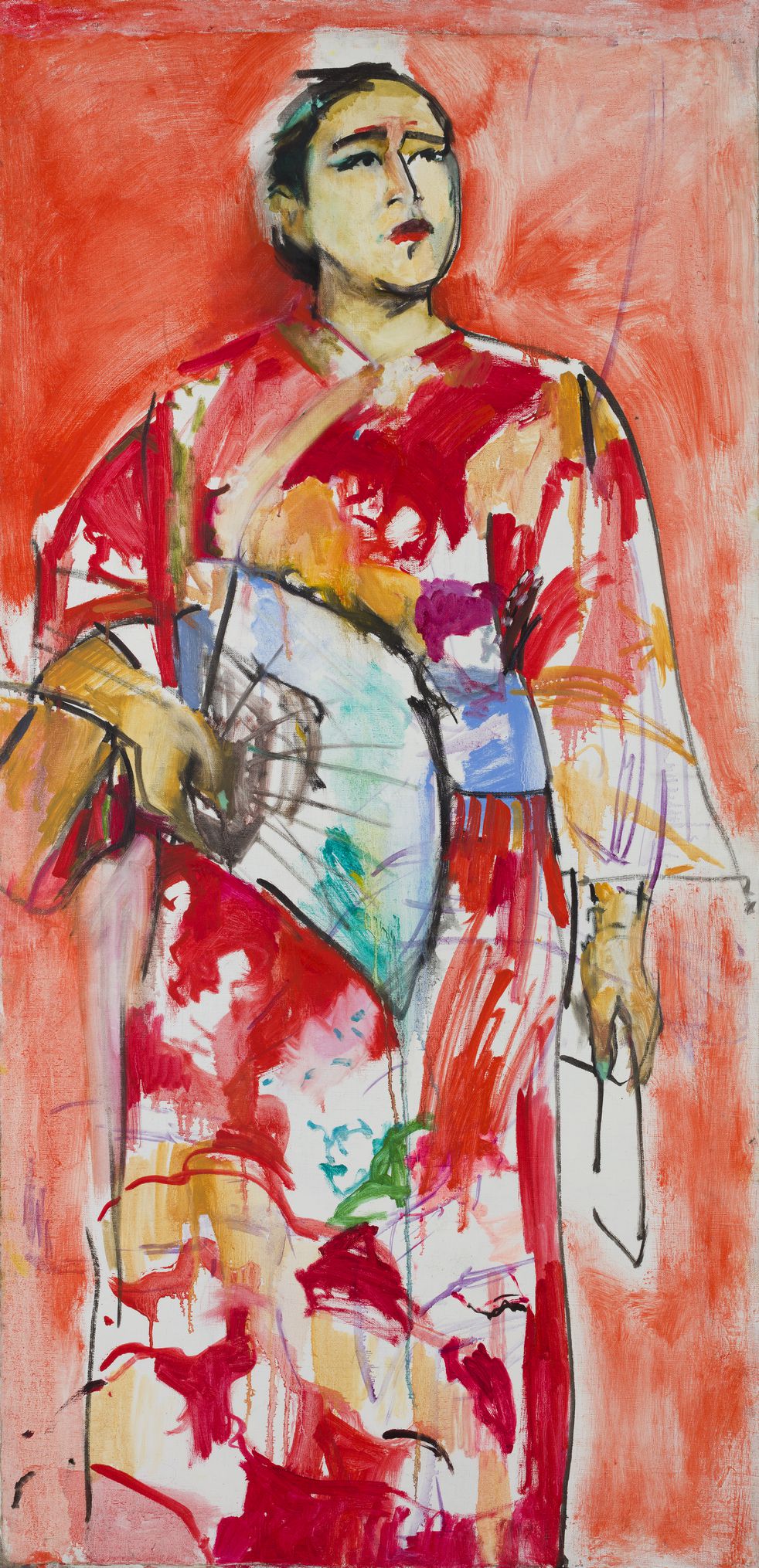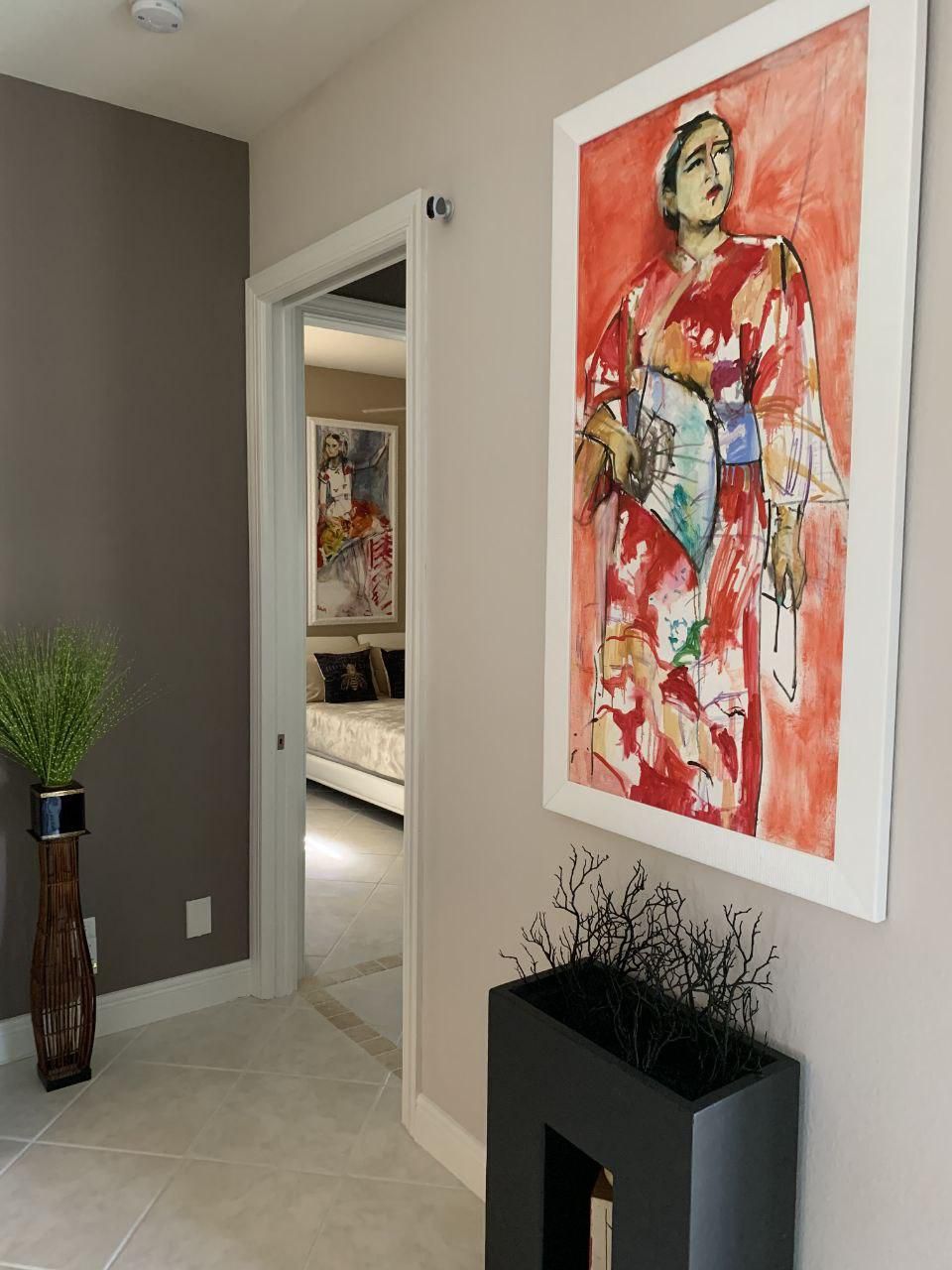Fan Dance in the Edo Period
by Anna Kornilova (PhD in Art History),
Assistant Dean, Senior Lecturer, Art History Department,
St. Petersburg University of the Humanities and Social Sciences



Xenia Prokhorova has been interested for a long time in Japanese art, Japanese culture and Japanese mentality. She was very impressed, when on a visit to Japan, with the singularity of the Japanese plastic arts in their synthesis with music.
Xenia says the following about this painting: “I painted Fan Dance in the Edo Period after my first trip to Japan in 2015. I brought back a kimono from there and many impressions. This painting is my way of representing in color my emotional experience related to Japan, to what I could feel and what I could see while staying there. This was a short, but vivid moment, and its vibrancy and novelty were captured in this painting.”
Xenia makes use of such a device as retrospectivism in some of her pieces in the “portrait” series—she does this by putting some traditional dress on her model, yet avoiding needless details that would make the spectator look for the historical accuracy of the costume, thus distracting him from the artistic image per se, from an association. Red color (which is the color of life in the Japanese tradition) dominates in this work, increasing the intensity of the whole figurative plane, while the model’s face remains calm and detached, with a Buddha-like smile of enlightenment on it. The fan in the foreground is seen in Japan—depending on the fan’s position—as a symbol of life, of the roads we choose during our life, and of the flow of time. It is also an attribute of Shinto goddess Amaterasu. Fan dance relates the story of the fan, its first appearance and its importance for the lives of the Japanese. Aiming to further develop the imagery, Xenia uses stylistic elements of Art Nouveau, a style which emerged through a close connection to ukiyo-e, the Japanese woodblock printing, to Post-Impressionism and to Expressionism serving as an idiom of emotional expression of the plastic solution. The line and the contour, being a great means of expression, narrow the distance between painting and Japanese xylography.